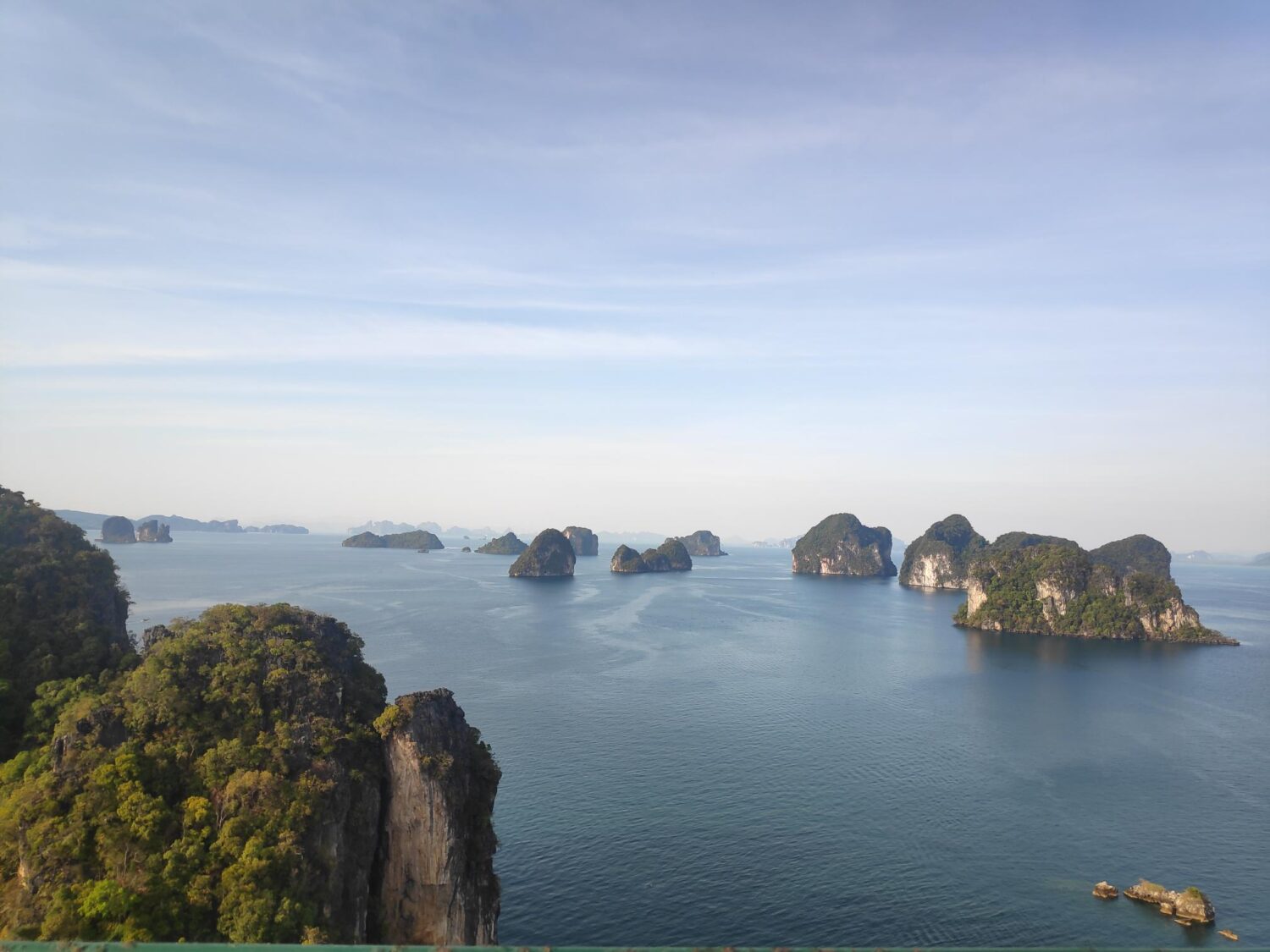
Monkey Back Guarantee
A few weeks back, we’d endured an especially rolly anchorage, causing neither of us to get much sleep that night. In the morning I checked the cruising guide, charts and weather and selected the anchorage for that night – I was so sure that it would be flat calm that I told Helen that it came with a money back guarantee! You know, “a great night’s sleep or your money back!”. For the record, it was a flat anchorage and we both slept well, but it wasn’t until a few weeks later that we noticed a lot of monkeys on some beaches. It was fun to wake up and watch them playing on the beach the following morning. Helen added another requirement to “a perfect anchorage” – the presence of monkeys! And so, the phrase was quickly changed to “Monkey back guarantee!”.


Monkeys and a good nights sleep aside, we’re getting better at choosing anchorages.
When anchoring, we let out enough chain equivalent to about five times the water depth (ie, “five-times scope”), so we have the weight of all that chain to absorb any movement that waves or wind may create. Most of that chain sits on the bottom of the anchorage and forces moving Aroha around (currents, wind and longtail boats speeding by… grrrr!) are absorbed by the straightening of the chain then resettling on the bottom. If this comes up in your next pub quiz, this is called Catenary Action… You’re welcome.
Generally, in areas affected by tidal flow, like a river mouth or at the top of a bay, the current holds us steady one way and then gently swings us around to the other direction four times a day when the tide (and the corresponding tidal flow) changes. It usually takes about half an hour to swing around, when the motion is a bit bumpy until she settles down again, but it’s a kind of a nice way to mark the passing of time in sync with nature. When the current’s not strong, we’re usually held in place by the wind – the boat is designed to scoop the wind inside, so it’s normally comfortably cool.
It can get uncomfortable though, when the current and wind directions fight each other – for example, if the current holds her sideways to the wind, it’s surprising how rolly she can become with a small wind or wave on her beam (side), and that’s what was happening in the above rolly anchorage.


We haven’t used mooring buoys much before, so it’s taken a little while to get used to them. There are lots around and most are free to use. The local authorities are keen to install more to protect life on the ocean floor. It’s illegal to damage coral – we’d read about a boat owner that was fined $1,000 when he misjudged the depth and his keel skimmed the top of a coral reef causing some damage. The incident quickly circulated on social media as some divers had been in the water and caught the whole event on camera.
At New Years we tied onto a mooring buoy that was close enough to the beach to pick up the resort WIFI! Better, we had front row seats to the midnight beach fireworks display! But because it was only three or four meters deep, there was only a short rope between us and the sea floor, meaning that compared to anchoring we had a very short scope and a very bouncy night with plenty of “snatch” each time the mooring line went tight. Even New Year cocktails didn’t bring sleep easily that night! Generally, we only use mooring buoys when it’s too deep to anchor – we have 70m of chain, which limits us to about 14m maximum depth (based on a typical 5 to 1 scope). The other time we prefer mooring buoys is in a crowded anchorage – where, because of the smaller swinging circles, you can fit moor boats in. Ha ha, see what I did there!?



There’s a kind of strange sociability within the cruising community. We often recognise the same boats in anchorages and chat to people when the opportunity arises, like stopping by other yachts to say hello on our way dinghy-ing ashore. Most cruisers are happy to share knowledge of where they’ve come from and gather it on where they’re heading. But it can be a bit of a balancing game – some people just want their own space and we’ve encountered a few yachts where the reception has been ice cold. We know cruisers who seldom leave the marina and others who seldom leave their boats! Like anchorages, cruisers come in all shapes and sizes.


Sometimes people anchor inconsiderately – normally too close – the term for this in the cruising world is “w-anchors”.
Most anchorages are big enough for boats to spread out a bit, but a few weeks ago we were enjoying a sundowner beer on the foredeck as a huge stinkpot (motorboat) pulled up and dropped his anchor so close to us we could catch the end of the evening news on his big screen TV. Mind you, he may be blogging about their w-anchor neighbour practicing clarinet in the darkness that night. What a w-anchor!

At the risk of sounding like a broken record, this is the type of cruising we’ve been dreaming of for years. We’re loving the variety of experiences – monkeys and all – that this lifestyle is offering us 🙂


Follow and like us to be notified of future blogs!






One Comment
Pingback: